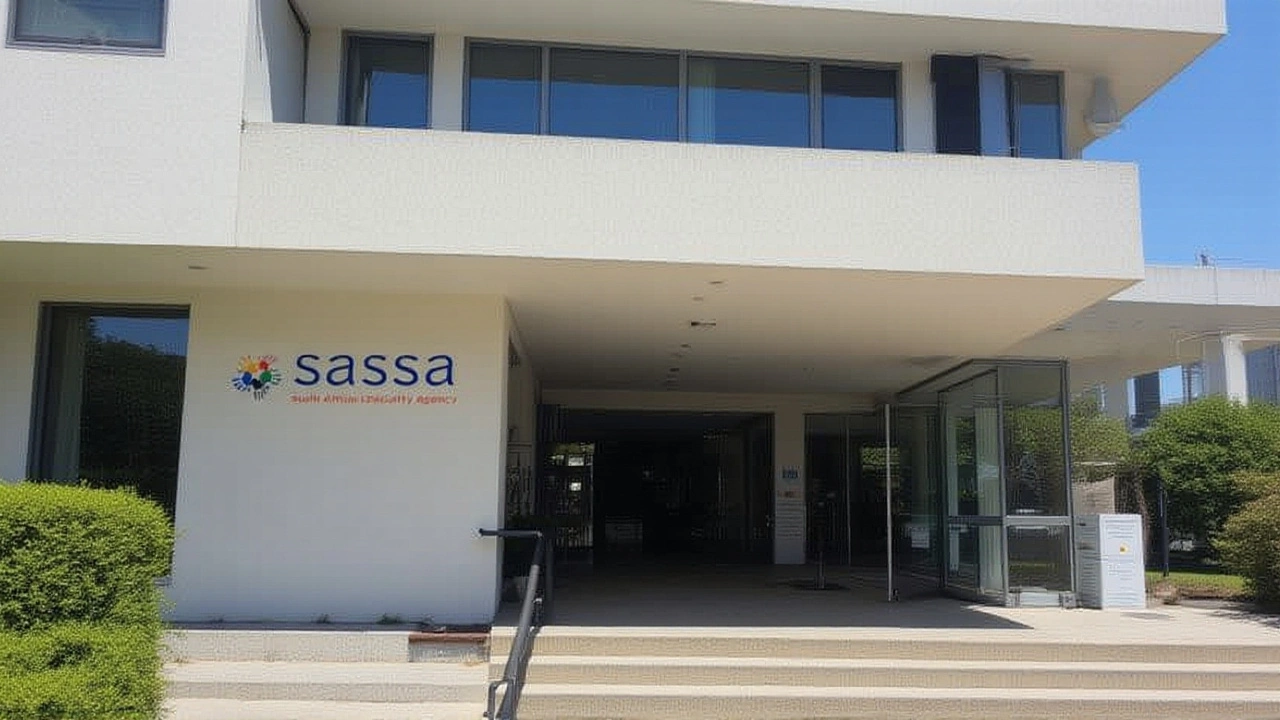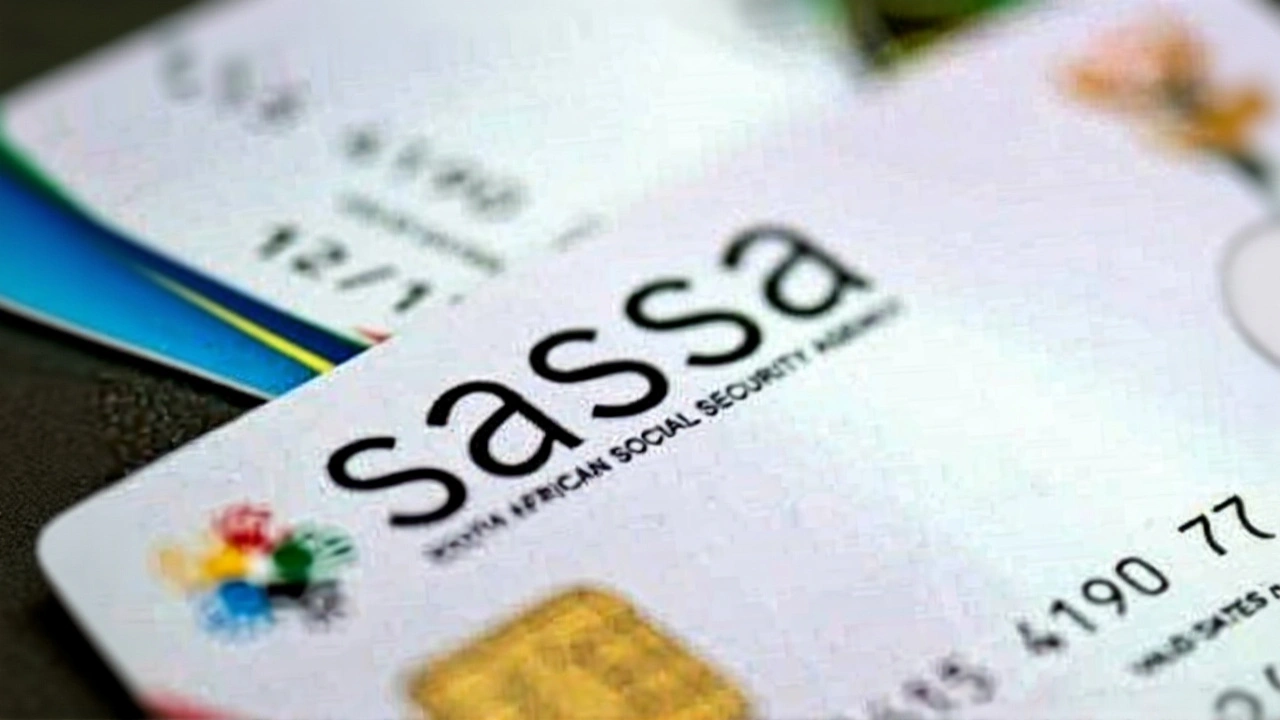When Themba Matlou, CEO of South African Social Security Agency (SASSA) unveiled the October 2025 calendar, millions of South Africans instantly knew when their lifelines would land. The schedule, released on SRD R370 Grant October 2025 Payment WindowSouth Africa, runs from 25 to 30 October, while regular grants kick off earlier in the month – Old Age Grants on 2 October, Disability Grants on 3 October, and all other social grants on 6 October. This rollout comes alongside a fresh mandate: every new applicant must enrol biometrically from 1 September 2025, a move SASSA says will curb fraud and tighten the safety net for the country’s most vulnerable.
Payment Schedule Overview
The SRD R370 grant is the short‑term relief cash injection that helps households cover food, transport and basic utilities. In October, the five‑day window (25‑30 October) mirrors the pattern SASSA has followed all year – January 25‑30, February 25‑28, March 25‑30, and so on. By keeping the window at the month’s end, the agency gives beneficiaries a predictable timeline to plan their budgets.
Regular social grants follow a slightly different rhythm. On Thursday, 2 October, the Old Age Grant (OAG) will be credited, followed by the Disability Grant on Friday, 3 October. The remaining grants – child support, care dependency, foster care and other targeted payments – are slated for Monday, 6 October. SASSA cautions beneficiaries not to rush to collection points on the first day; funds sit in bank accounts until withdrawn, allowing flexible access.
In total, SASSA supports roughly 18 million South Africans across its grant portfolio. The October batch alone will move close to R1.5 billion into the economy, a modest boost that still matters for families living on the edge.
Biometric Enrollment Rollout
Starting 1 September 2025, anyone applying for a new grant must provide either fingerprints or facial‑recognition data. The biometric system, built on a R300 million investment from the National Treasury, was piloted in Gauteng during 2023 and reportedly slashed duplicate applications by about 28 %.
"Our goal is simple – only genuine beneficiaries should see their money," Matlou said at a press briefing in Pretoria. "The technology is already in place, staff have been trained, and the infrastructure is live across all 17 provincial offices."
The rollout includes portable enrolment kits for remote clinics, ensuring rural applicants aren’t left behind. SASSA estimates that by the end of 2025, biometric verification will have covered 85 % of all active grant holders, trimming the annual fraud loss from an estimated R2 billion to under R1.4 billion.
How Beneficiaries Can Verify and Collect Payments
Before checking the payment date, SRD recipients must confirm their status on the official SASSA portal. All they need is their ID number and mobile phone – the system instantly tells them whether they’re still eligible for 2025’s relief.
For those who prefer face‑to‑face help, the toll‑free line 0800 60 10 11 remains active 24 hours a day. SASSA offices, located in every major town, also host weekly “grant clinics” where staff walk beneficiaries through the biometric enrolment steps.
Bank‑linked beneficiaries will see the money appear in their accounts on the scheduled dates. Cash‑pick‑up recipients still use the traditional Paypoint network, but they’re urged to stagger visits to avoid queues – the funds stay in the virtual account until withdrawn.
Implications for Fraud Prevention and Public Trust
South Africa’s social grant system has long been a magnet for fraudulent claims. According to the Auditor‑General’s 2024 report, about 4 % of payouts were deemed irregular. Biometric data promises a tighter lock on that leak.
Experts from the University of Cape Town’s School of Public Policy echo SASSA’s optimism. "Biometrics are not a silver bullet, but they’re a powerful deterrent," says Dr Lindiwe Mkhize. "When combined with real‑time data analytics, they can flag red‑flags before money even leaves the vault."
Nonetheless, critics warn of privacy concerns and the need for robust data‑protection frameworks. Civil‑rights groups have urged the government to publish a clear data‑handling policy, ensuring biometric templates are stored securely and only used for grant verification.
What’s Next for South Africa’s Social Grants System
Looking ahead, SASSA plans to extend biometric enrolment to all existing grant holders by mid‑2026, a phased approach that will require another R150 million for system upgrades and outreach.
In parallel, the agency is exploring a digital wallet solution that would let beneficiaries receive payments directly on their phones, further reducing reliance on cash points. If successful, such a move could shave months off processing times and bring the grant system in line with global digital‑payment trends.
For now, the October calendar serves as a reminder that while the money arrives on schedule, the way it’s delivered is evolving fast. Beneficiaries who adapt to the new biometric requirement will likely enjoy smoother, more secure transactions in the years to come.

Frequently Asked Questions
When will the SRD R370 grant be paid in October 2025?
The SRD R370 grant will be distributed between 25 October and 30 October 2025. Beneficiaries can check their exact credit date on the SASSA portal or via SMS alerts.
What biometric data is required for new grant applicants?
Applicants must enrol either fingerprint or facial‑recognition data. The enrolment is done at any SASSA office or through mobile kits that travel to remote communities.
How will the biometric system affect existing grant holders?
Existing beneficiaries are not immediately required to re‑enrol, but SASSA plans a phased rollout that will ask all current holders to update their biometric profile by mid‑2026.
Will the new system reduce fraud?
Early pilots suggest a 28 % drop in duplicate applications. Officials expect overall fraud losses to fall from roughly R2 billion to under R1.4 billion once full biometric coverage is achieved.
How can beneficiaries get help if they have questions?
Beneficiaries can call the toll‑free line 0800 60 10 11, visit the nearest SASSA office, or use the online chat feature on the SASSA website for assistance with payments or biometric enrolment.







Prakash Dwivedi
October 1, 2025 AT 18:35 PMThe rollout of biometric enrollment feels like another hurdle for those already stretched thin, yet the promise of cutting fraud is undeniably appealing. Precise data capture could streamline verification, reducing the time beneficiaries spend queuing at offices. However, the transition may disproportionately affect the elderly who are less comfortable with technology. The schedule for the SRD R370 grant is clearly laid out, giving families a reliable window to plan. In the end, efficiency gains might outweigh the temporary inconvenience.
Rajbir Singh
October 1, 2025 AT 21:55 PMThe dates are straightforward and the biometric rule seems strict but necessary. People who can’t get to a centre might struggle, though. Simpler is better for most.
Swetha Brungi
October 2, 2025 AT 01:15 AMIt’s encouraging to see the government taking concrete steps to curb fraud, especially after the audit highlighted irregularities. The five‑day window for the SRD R370 grant aligns well with the end‑of‑month budgeting many families rely on. Still, the mandatory biometric enrolment could be a barrier for remote communities, despite the portable kits. If the rollout is truly nationwide, it should empower even the most isolated applicants. Let’s hope the support infrastructure keeps up with the demand.
Govind Kumar
October 2, 2025 AT 04:35 AMDear colleagues, the schedule delineated for October reflects a commendable effort to provide predictability to beneficiaries. The biometric initiative, while technologically sound, must be accompanied by robust outreach to mitigate any disenfranchisement. It is prudent to monitor the impact on fraud reduction metrics over the forthcoming quarters. Moreover, transparency regarding data handling will bolster public trust. I trust the agency will uphold these standards with diligence.
Shubham Abhang
October 2, 2025 AT 07:55 AMWell, the plan looks good, but, you know, the reality on the ground can be quite different, especially for those who live far from urban centres, and the biometric kits need to be truly mobile, otherwise the whole thing could backfire, as many have seen with previous roll‑outs.
Trupti Jain
October 2, 2025 AT 11:15 AMAlright, let’s talk about the vibe of this whole thing. The schedule is clear, the grants are coming, and that’s the good news. But the biometric thing? It’s a bit of a mixed bag – flashy tech meets old‑school bureaucracy. If they can keep it simple and colorful, maybe it won’t feel like a chore. Still, I’d love to see more on how they’ll protect our data, because that’s the real glitter that worries me.
deepika balodi
October 2, 2025 AT 14:35 PMBiometrics could actually speed things up.
Priya Patil
October 2, 2025 AT 17:55 PMFrom a coaching perspective, the clarity of the payment dates is a solid foundation for family budgeting. The biometric enrollment, while initially intimidating, offers a long‑term safety net that could reduce the stress of fraud worries. It’s also a chance for community centres to become hubs of digital literacy, empowering applicants beyond just the grant process. If the outreach teams are patient and thorough, the transition could become a learning experience rather than a hurdle. Remember, change is most successful when people feel supported every step of the way. Let’s keep an eye on the feedback loops that SASSA puts in place – they’ll be crucial for fine‑tuning the system.
Rashi Jaiswal
October 2, 2025 AT 21:15 PMWow, this is actually exciting! I think the biometric thing will make things smoother for everyone. Plus, if we can avoid long queues, that’s a win in my book.
Maneesh Rajput Thakur
October 3, 2025 AT 00:35 AMFirst, let’s acknowledge that the government’s announcement is wrapped in the usual language of efficiency and security, but underneath lies a tapestry of deeper concerns. The biometric rollout, while presented as a triumph of technology, opens a Pandora’s box of privacy implications that many citizens are unwilling or unable to fully comprehend. Historically, similar initiatives have been plagued by data breaches, and the pattern repeats itself when central databases are created without airtight safeguards. Moreover, the emphasis on fraud reduction often masks a more insidious motive: the consolidation of state power over personal information. The citizens of South Africa deserve more than a promise of reduced fraud percentages; they deserve transparency about how their biometric templates will be stored, who will have access, and for how long. It is also crucial to consider the digital divide: while urban areas may adapt quickly, rural communities with limited internet connectivity could be left behind, effectively disenfranchising a significant portion of the vulnerable population. The portable enrolment kits are a good start, but without robust training for staff and community education, these tools risk becoming ineffective tokens. Additionally, the reliance on a single biometric modality-whether fingerprints or facial recognition-does not account for individuals with disabilities or those whose biometric data may be hard to capture due to age or occupational wear. A truly inclusive system should offer alternatives or accommodations. The financial investment of R300 million is substantial, yet the government must also allocate resources for ongoing maintenance, updates, and independent audits to ensure the system does not become obsolete or corrupted. The mention of a future digital wallet is a promising vision, but it raises further questions about the integration of biometric data with mobile platforms, which are themselves vulnerable to hacking. Finally, the public trust that SASSA hopes to build hinges on open dialogue, participatory oversight, and clear legal frameworks that protect citizens from misuse. Until these elements are firmly in place, the biometric enrollment remains a double‑edged sword-capable of both protecting and infringing upon the very people it aims to serve.
ONE AGRI
October 3, 2025 AT 03:55 AMReading the comprehensive analysis, one cannot help but feel a surge of empathy for those communities that might be overlooked. The emotional weight of potentially being excluded from essential support is significant, and the promised technology, while impressive, could unintentionally amplify existing inequities. It is vital that SASSA not only deploys the biometric kits but also ensures that staff are culturally sensitive and patient, especially when dealing with elders who might be apprehensive about fingerprint scans. Moreover, the discussion on data security should not remain abstract; concrete examples of encryption standards and third‑party audits could alleviate public anxiety. By fostering a collaborative environment where beneficiaries are informed participants rather than passive recipients, the rollout could transform into a model of inclusive governance. The long‑term vision of a digital wallet should be pursued cautiously, with safeguards that respect privacy and guarantee accessibility for those without smartphones. In essence, the success of this initiative hinges on transparency, education, and genuine community engagement.
Himanshu Sanduja
October 3, 2025 AT 07:15 AMHey everyone, great points all around! The schedule looks solid and the biometric step could really cut down on fake claims. Let’s hope the rollout is smooth and that everyone gets the help they need without too much hassle. If anyone needs tips on the enrollment process, feel free to ask – happy to share what I know.